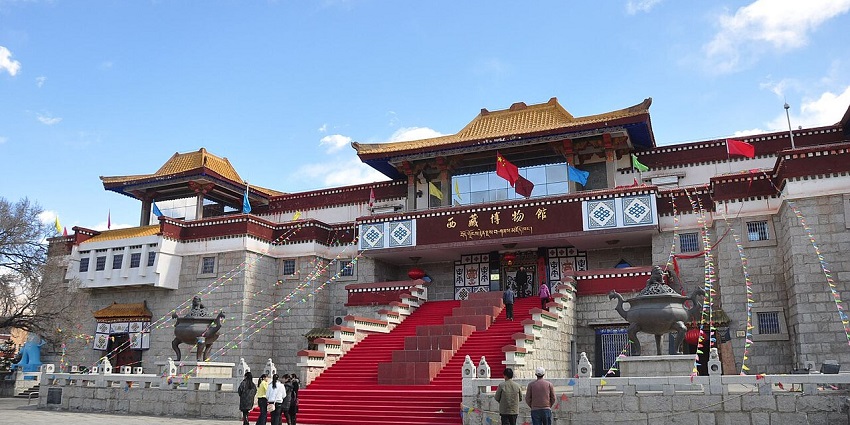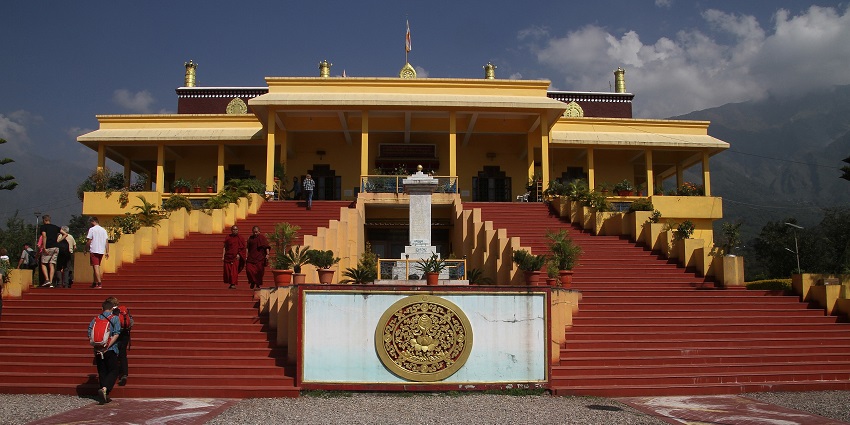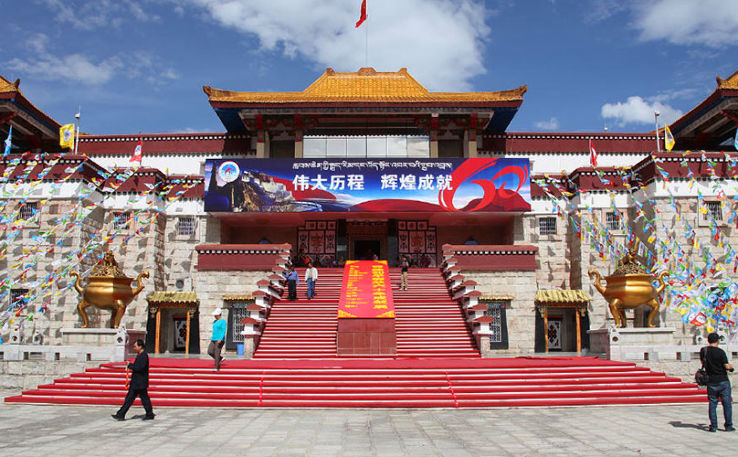Tibet Museum
Published on June 26, 2025
Nestled in the serene town of McLeodganj, Himachal Pradesh, the Tibet Museum stands as a powerful testament to the resilience, culture, and history of Tibet. Located within the Tibetan Government-in-Exile complex, right next to the Tsuglagkhang (Dalai Lama Temple), the museum offers visitors a deeply moving experience, combining visual storytelling, cultural artefacts, and documentation of Tibet’s struggle for freedom.
Whether you're a traveller, a spiritual seeker, or someone keen on world history, a visit to the Tibet Museum is not just informative, but emotional and inspiring.
Origin & Background
The Tibet Museum was officially inaugurated on April 30, 2000, by His Holiness the 14th Dalai Lama. It was established by the Department of Information and International Relations (DIIR) of the Central Tibetan Administration (CTA).
Its main aim is to:
-
Preserve Tibetan history, culture, and heritage
-
Raise awareness about the Tibetan struggle for freedom
-
Educate both Tibetans and international visitors about the Chinese invasion and the subsequent exile of the Tibetan people

A Museum Born from Exile
After the Chinese occupation of Tibet in 1950, thousands of Tibetans, including the Dalai Lama, fled their homeland and settled in India. McLeodganj, also known as "Little Lhasa," became a major centre of the Tibetan exile community.
The Tibet Museum was created to tell the story of:
-
Life in Tibet before the occupation
-
The hardships faced during the Chinese invasion
-
Mass exodus and refugee life
-
Tibetan resistance and non-violent struggle
-
Ongoing human rights issues in Tibet
What You’ll See Inside
The Tibet Museum is modest in size but rich in content. It features a combination of photographs, documents, videos, personal stories, infographics, and historical records. It’s designed in a way that speaks not just to your mind, but to your heart.
Key Sections of the Museum:
1. Permanent Exhibition: “A Long Look Homeward”
This emotionally powerful section traces:
-
The history of Chinese occupation
-
The destruction of over 6,000 monasteries
-
Imprisonment and torture of monks and nuns
-
The journey of Tibetan refugees into exile
-
Stories of ordinary Tibetans who resisted oppression
Photographs, quotes, and personal testimonies bring these stories to life. Many visitors describe it as eye-opening and deeply emotional.

2. Temporary Exhibitions
These change from time to time and may include:
-
Tibetan art and thangka painting
-
Life of the Dalai Lama
-
Cultural festivals
-
Global solidarity for Tibet
3. Documentary Screening Room
Short films and documentaries are screened to help visitors understand:
-
The political history of Tibet
-
Chinese censorship and propaganda
-
Tibet's spiritual heritage
-
Testimonies from Tibetan refugees
Visual Storytelling at Its Best
The Tibet Museum uses powerful black-and-white and color photographs, along with maps and timelines, to narrate:
-
The loss of Tibetan identity
-
The journey across the Himalayas into India
-
Refugee camps and rebuilding of lives
-
Voices of Tibetans still in Tibet under surveillance and control
These exhibits are designed to educate, evoke empathy, and inspire action.
Cultural & Spiritual Significance
The museum is not just a political narrative—it’s also about preserving Tibetan culture and values, such as:
-
Buddhism and compassion
-
The teachings of His Holiness the Dalai Lama
-
Traditional practices like meditation, prayer flags, and festivals
-
Art, dance, language, and music
It helps visitors understand why freedom is essential not only for human rights but also for cultural survival.
Location & Visiting Information
-
Location: Adjacent to the Dalai Lama Temple complex, McLeodganj, Dharamshala, Himachal Pradesh
-
Timings: 9:00 AM to 5:00 PM (closed on Mondays and public holidays)
-
Entry Fee: Nominal (approx ₹10–₹20); donations are welcomed
-
Photography: Allowed in most parts, but no flash
-
Nearest Bus Stop: McLeodganj
-
Nearest Airport: Gaggal Airport (Dharamshala), about 20 km away
Who Should Visit?
The Tibet Museum is ideal for:
-
History buffs who want to explore a lesser-told modern history
-
Spiritual seekers visiting the Dalai Lama Temple nearby
-
Students and researchers studying human rights, exile, and non-violent resistance
-
Tourists looking to gain deeper insights into McLeodganj beyond sightseeing

Why the Tibet Museum Matters
The Tibet Museum is not just a place of remembrance—it’s a voice for the voiceless. In a world that often forgets small nations and silences oppressed communities, the museum ensures that:
-
Tibet’s true story is preserved
-
Global citizens understand the impact of colonisation
-
Future generations can learn from peaceful resistance
-
The cultural identity of Tibet lives on, even in exile
It’s a reminder that while borders can be occupied, souls and stories remain free.
Final Thoughts
If you're in McLeodganj, don’t miss the opportunity to visit the Tibet Museum. It's not just another museum—it’s an emotional journey, a history lesson, and a cultural bridge rolled into one.
It will leave you with a deeper understanding of Tibet, a stronger appreciation for freedom, and a sense of connection to a people whose story continues to inspire the world.
